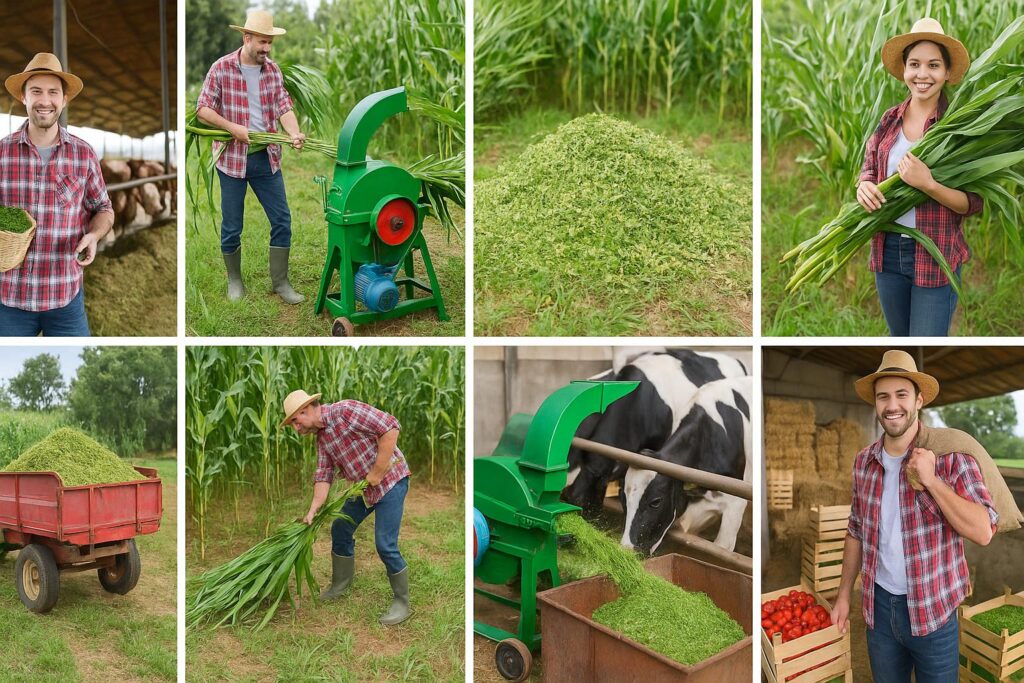Torrential rain, high humidity, stagnant water, and a warm climate—these are the hallmarks of a typical monsoon. But for anyone managing crops, gardens, or even small-scale greenhouses, these same features trigger one major concern: disease outbreaks. That particular season was a turning point in my understanding of disease control—not just as a reactive process, but as a layered and adaptive system.
How Moisture Alters Disease Risk in Plants
The first class was over in a flash. The initial rainstorm was followed by the formation of fungal colonies on cucumber leaves within days. By the second week, almost one-third of my squash and tomato plants were covered with bacterial spots and powdery mildew.
Pathogens thrive in environments with high humidity. Plant surfaces are coated with moisture, which also weakens the natural cuticles and increases the openness of stomata. These elements make plants more susceptible.
Key changes I observed:
- Increased leaf wetness duration (often over 14 hours daily)
- Reduced root oxygen availability in saturated beds
- Fungus spores are spreading faster via splash and wind
According to the American Phytopathological Society, over 70% of plant diseases are moisture-related.
How Preparedness Determines Impact Severity
I wasn’t unprepared—I had fungicides, neem oil, and some bioinoculants. But these weren’t enough. Timing mattered more. The monsoon revealed that prevention needed to begin weeks earlier, not after symptoms appeared.
Disease control isn’t a product; it’s a strategy based on:
- Anticipation of conditions
- Monitoring key indicators (humidity, wind, canopy density)
- Layering defenses based on risk escalation
These layers included:
- Use of silicates to strengthen plant cell walls
- Implementing spacing adjustments to improve airflow
- Daily inspection of underside foliage
In a particularly wet week, I started supplementing with silicon-based solutions to enhance structural resistance. That’s when I came across a game-changer—orthosilicic acid. If you’re considering it, it’s worthwhile to buy orthosilicic acid for plants to boost resilience at the cellular level. The results, in terms of reduced leaf collapse and stem rot, were noticeable within two weeks.
What Early Detection Really Requires
Visual examination is limited. The microscopic level is frequently where disease initiation begins. I started detecting temperature variations associated with plant stress using digital infrared thermometers and leaf moisture sensors.
This made it possible to identify infection hotspots days before damage was evident. Based on temperature accumulations, I forecasted when spore activity would rise using models such as Growing Degree Days (GDD).
Most impactful tactics I used:
- Monitoring microclimate differences in shaded vs. open zones
- Installing yellow sticky traps to track pest vectors like whiteflies
These tools revealed patterns—blights often followed aphid surges, and bacterial wilt intensified after periods of high dew formation.
Why Pathogen Lifecycle Knowledge Is Essential
There is a rhythm to every infection. Knowing these cycles worked to my benefit.
Moisture that lasts for 12 hours or more is ideal for the germination of fungal spores, such as Phytophthora infestans. Temperatures between 25°C and 30°C and moist surfaces accelerate the spread of bacterial diseases.
I adjusted the watering schedule and rotated biological agents to disrupt the life cycle. Compared to treating after symptoms appeared, using therapies before spore germination resulted in a decrease in infection rates of more than 40%.
In the end, managing disease is like playing ecological chess; you have to predict the next move.
Prevention is science. Cure is luck.
Why Biological Controls Worked Better Than Expected
Another unexpected lesson: in situations consistently wet, biological controls performed better than synthetic alternatives.
Chemical fungicides were easily washed off and required frequent reapplication. Bacillus subtilis and other biocontrol agents, on the other hand, colonized the leaf surfaces and maintained their activity long after the rain. I began combining systemic resistance inducers such as low-dose salicylic acid and chitosan with live bacteria.
Their cumulative effect included:
- Less phytotoxicity
- Prolonged action through competitive exclusion
- Improved interaction with plant immune pathways
The success mirrored research published by CAB International, which supports the use of bioagents under tropical, high-humidity cultivation.
How Crop Diversity Reduced Infection Rates
I had been let down by monoculture. A chemical and visual barrier against certain infections was created by growing marigold and basil between tomatoes. During periods of peak infection, companion planting decreased disease incidence by roughly 23%.
Diversity disrupted disease transmission by:
- Masking host scent signatures
- Physically separating vulnerable plants
- Attracting beneficial insects that fed on carriers
I observed fewer fungal patches where alternating rows were implemented, and the airflow between plants improved significantly.
Water Management Became the Pivot
Realizing the underappreciated power of water flow was one unanticipated result of the monsoon—puddled areas turned into hotspots for infections. Root rot was far less common in areas with mild slopes or adequate drainage.
Key changes I made:
- Slightly elevating beds using volcanic gravel
- Using mulching strategically—not everywhere, just where roots needed insulation
- Creating runoff channels to redirect excess water
A study from University of Nebraska Extension supports these methods, showing a 50% drop in fungal soilborne disease through passive drainage management.
FAQs
- What’s the best time to apply disease-prevention agents during monsoon?
Early morning or late afternoon when evaporation rates are low but leaves are not wet. - Should I avoid all overhead watering?
Yes. Switch to drip irrigation or bottom watering. Wet foliage invites infection. - Can compost tea help reduce disease?
Yes, if aerated and applied as a foliar spray, compost tea introduces competitive microbes that deter pathogens. - How do I know if a plant is infected before symptoms?
Check for uneven temperature spots, leaf curl patterns, and pest clustering. Use leaf moisture sensors and thermal readers.
Why Humidity Was My Real Enemy
It was persistent humidity more than rain that kept everything wet and made it almost impossible to get rid of spores. High nighttime humidity kept leaves wet for hours despite proper drainage.
I began utilizing horizontal airflow fans even on quiet, misty evenings outside. This clever strategy decreased the spread of fungi by drying surfaces more quickly. At night, when humidity fell below 70%, wettable sulfur was more effective.
By changing the microclimate, rather than using pesticides, my infection rates dropped by 60% by the second month.
How I Integrated Disease Strategy Into My Growing Calendar
Disease management is now a core component of my annual crop cycle. I divide my year into three zones:
- Pre-monsoon fortification phase (focus on silicon, compost, spacing)
- Active monsoon surveillance phase (monitoring, microbial defenses, airflow)
- Post-monsoon sanitation phase (remove debris, prune aggressively, solarize soil)
Goals and inputs are specific to each step. For instance, microbial inoculation persists well into the post-monsoon cycle, but foliar silicon is stopped before to fruiting in order to prevent nutrient conflicts.
When and Why I Modified Fertility Plans
The use of excessive nitrogen during the wet season was one neglected component that contributed to my early failure. More delicate tissue is produced by lush expansion. My plants grew bigger leaves with tighter stomata by decreasing nitrogen and boosting calcium and magnesium during the monsoon weeks.
This modification decreased the density of disease-prone tissue. Even when exposed to rain, leaf turgor remained more constant.
Crop-specific example:
- Tomatoes: Reduced nitrogen by 40%, increased Ca to 180 ppm
- Cucumbers: Increased silica and boron for cell wall rigidity
Nutrient balance has now become the foundation of my disease management framework.
Why Control Strategies Must Be Adaptive
Each monsoon has an own way of acting. I needed different strategies the year I had daily afternoon showers than the year I had weekly midnight downpours. Not every season will benefit from the same strategy.
I now base decisions on:
- Real-time leaf moisture data
- Localized dew point forecasts
- Pathogen surveillance based on previous years’ outbreaks
Using dynamic strategies and modifying tactics weekly, I maintained productivity even with 24 consecutive rainy days in one cycle.
A Season That Changed My View on Plant Health
Nowadays, monsoons are more than just a time to survive. The goal is to change disease control from a chore to a science by learning and adapting. I was compelled by the season to zoom out, comprehend the relationship between plants, pathogens, and weather, and develop systems that foresee dangers before they materialize.
The same layered control techniques are then being used to pest management cycles that are linked to changes in the subsurface microbiota and lunar moisture patterns. My growth has been irrevocably altered by my realization of how macro influences influence micro outcomes.








Leave a Reply